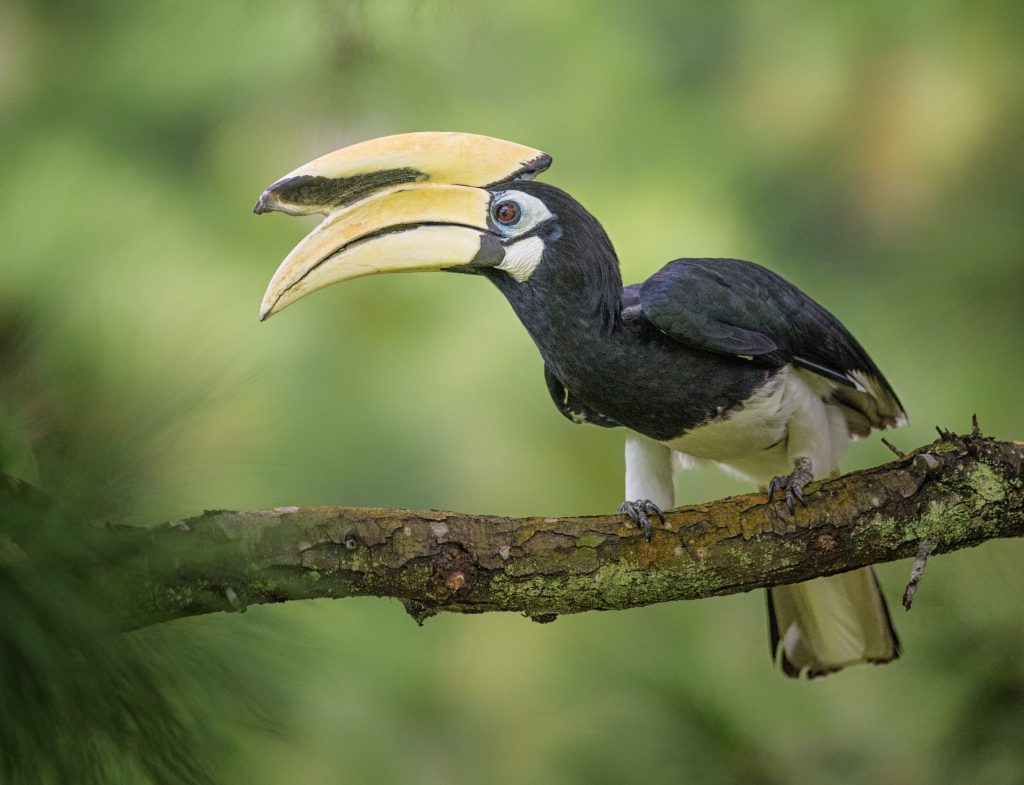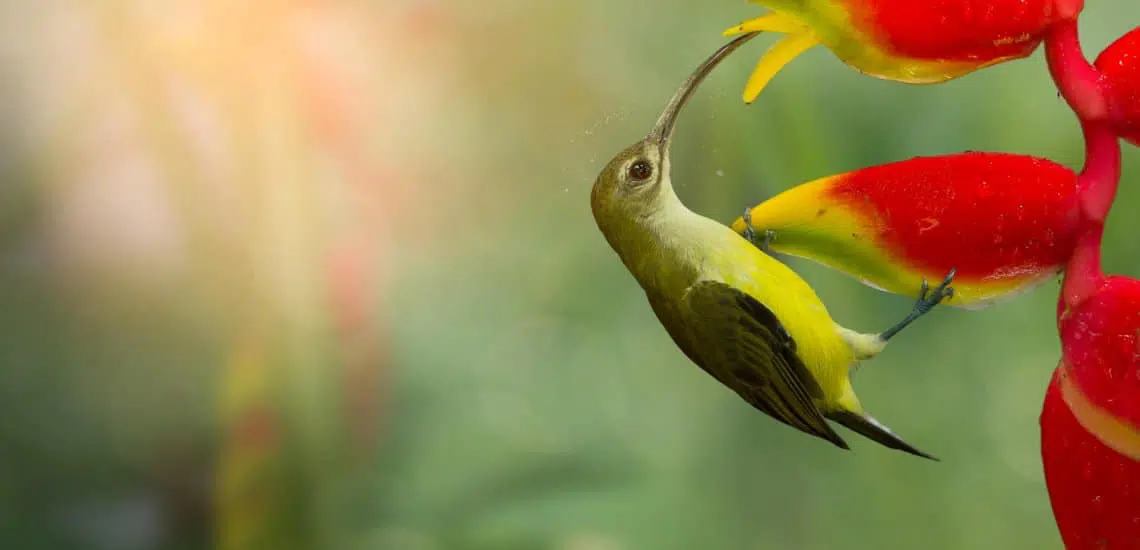Hornbills are more like us than you may think!

As we celebrate Hornbill Week, learn about the behaviours of these beautiful birds, and the ways that they are just like us.
Written by Ariana Loehr/ Cover Photo from Bjorn Olesen
Throughout South and Southeast Asia, hornbills are a part of everyday life. They’ve inspired architecture, songs, dances and festivals. Even as I write this, two hornbills are sat just 10 meters outside of my window on a tree.
Since 2020, the province of Antique in the Philippines, has been celebrating a festival known as Dulungan Month in honour of the Rufous-headed Hornbill, a Critically Endangered species found only in the Philippines. To recognise the other 32 species of hornbills found throughout Asia, BirdLife partners around Asia have joined together to celebrate the end of Dulungan Month with Hornbill Week.
This year during Hornbill Week we’re celebrating silly and endearing behaviours of these slightly clumsy, long-beaked birds. While they may look a bit different from us, you might just find that you have more in common with hornbills than you ever thought.
It’s lunch time!
While each Asian hornbill species has its own unique set of behaviours, one thing remains common amongst nearly all of the species- their taste for figs! The tropical forests of South and Southeast Asia are filled with fig trees. This offers a plentiful food source to fuel their large bodies. During the non-breeding season, some species like the Malabar Pied Hornbill will even have feeding parties in the tree canopies, with up to 50 of their nearest and dearest hornbill acquaintances.
Just like us, the birds also have a penchant for tropical fruit. Their giant beaks allow them to eat bigger fruits than other birds, and ensure that these large-fruited trees continue to thrive. Thanks to their powerful wings, when hornbills eat these large fruits, then fly far away to another patch of forest, they disperse the seeds through their droppings. This helps to maintain the fragile forest ecosystems and gives the birds the nickname of ‘farmers of the forest’.
Sometimes figs and fruit just aren’t enough for these big birds. Many hornbills have been observed eating small animals like lizards, snakes, crabs or bats for extra calories.
Creating a caring home
Hornbills may not impress their dates with smooth dance moves, but you might be able to spot a pair out eating on a date. Species like the Wreathed Hornbill have even been seen romantically feeding one another during their courtship. Just like us, most hornbill species will keep the same mate throughout their lifetimes.
When it comes to the breeding season, pairs of hornbills will go off in search of a safe home for their future babies. Pairs of Oriental Pied Hornbills can be seen across the urban centre of Singapore looking for tall trees with existing holes in them. These sizable holes might be left from a fallen branch, or had been carved out by another animal. When they find the perfect hole, the female seals herself inside using a mixture of mud, faeces and regurgitated food. Here, she becomes fully reliant on her partner to bring food to her, while she safely lays her eggs.
Because of the prevalence of hornbill poaching across Asia, the breeding season can be particularly stressful. For every male poached during the breeding season, the female and her chicks will also die from starvation. Luckily nest monitoring programs from BirdLife Partners, the Malaysian Nature Society, Biodiversity and Nature Conservation Association Myanmar, and Bird Conservation Society of Thailand aim to protect the nests of the rarest species in the region.
Facing up to threats
Despite their charming courtship, hornbills aren’t always the amicable birds that they seem. Helmeted Hornbills can get incredibly feisty over territorial disputes or competition for food. With incredible speeds, two birds will glide at each other, knocking the large casques atop their bills together with an audible CLACK. The birds then continue this ‘aerial jousting’ match for up to two hours! While the keratin filled casque may help these birds from getting seriously injured during these fights, their casque is also what makes them threatened by poaching. Hunters will sell the hornbill casque ‘ivory’ to be carved and sold for decoration.
Poaching isn’t the only human caused threat that the birds face. Hornbills are also extremely vulnerable to forest loss. Rapid development and the expansion of agriculture, particularly palm oil, has creeped into the areas that many species once called home.
One species of hornbill may be particularly vulnerable to forest loss. The Plain-pouched Hornbill is the only hornbill species known to migrate, and has been seen in groups of more than 1,000 individuals! Researchers believe that these birds are following the cycles of fruiting trees as they migrate from Malaysia, up to Myanmar, and back. As forests disappear along this route, the birds lose their pit stops. They have to travel longer distances on emptier stomachs, which could contribute to their current population declines.
BirdLife’s Forest Programme and Preventing Extinctions Programme work together to protect forest areas that are important for hornbills, and other amazing biodiversity. Take Hutan Harapan, a lowland rainforest in central Sumatra, Indonesia. In 40 years, 98% of the surrounding lowland rainforests in Sumatra have disappeared. This protected forest has become a crucial habitat for 7 species of hornbill living on the island.






